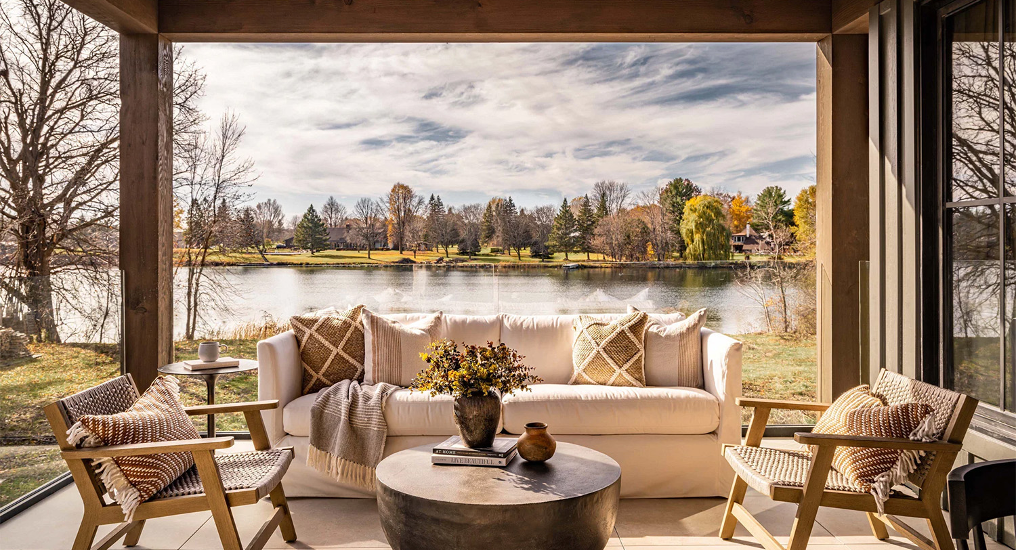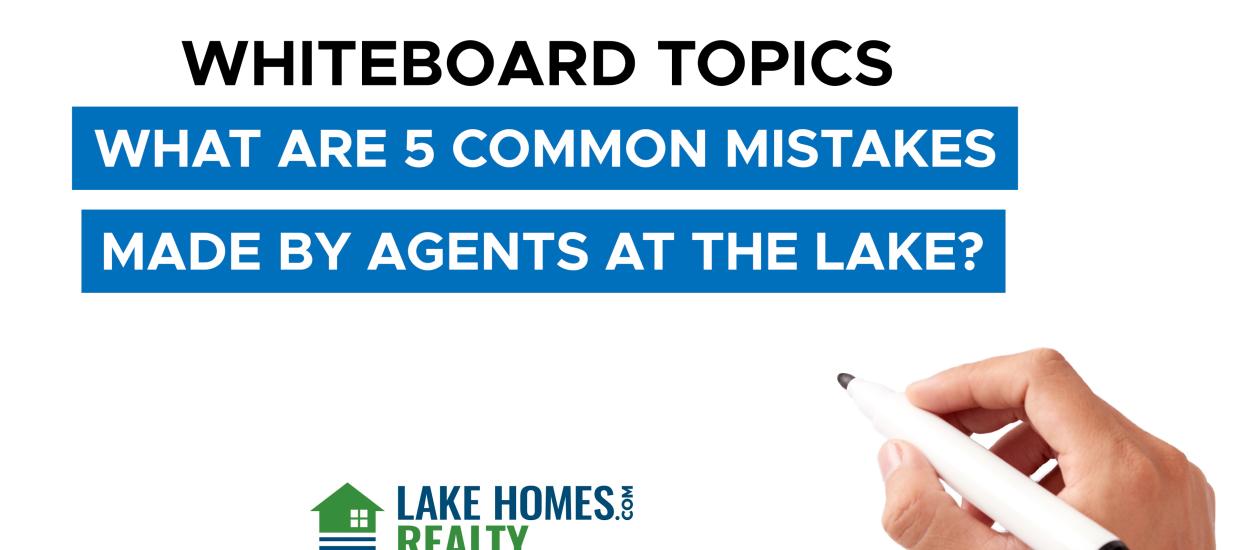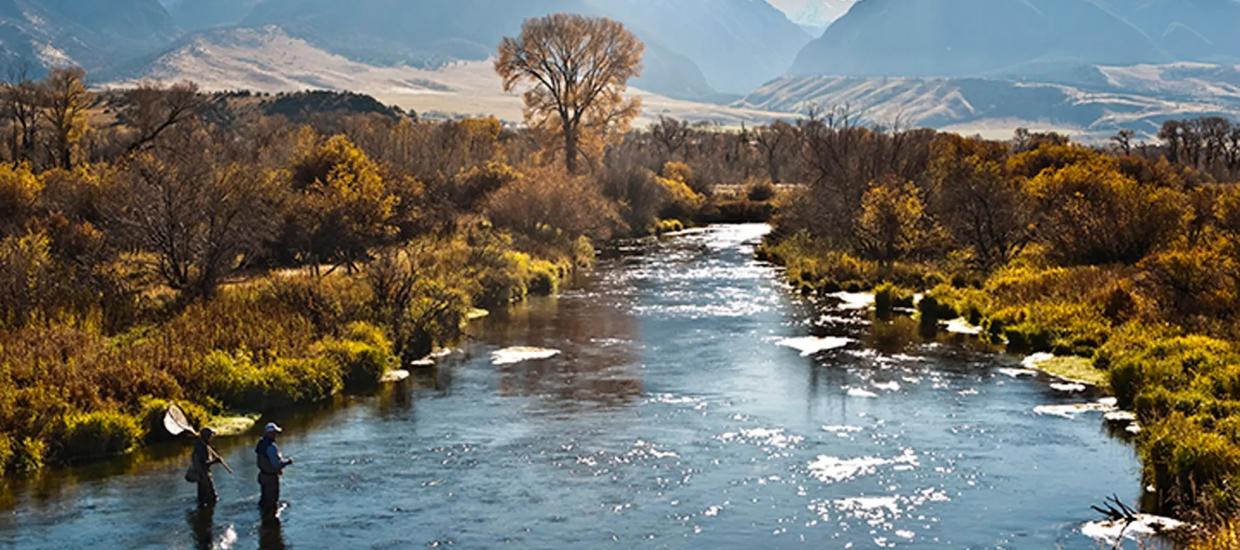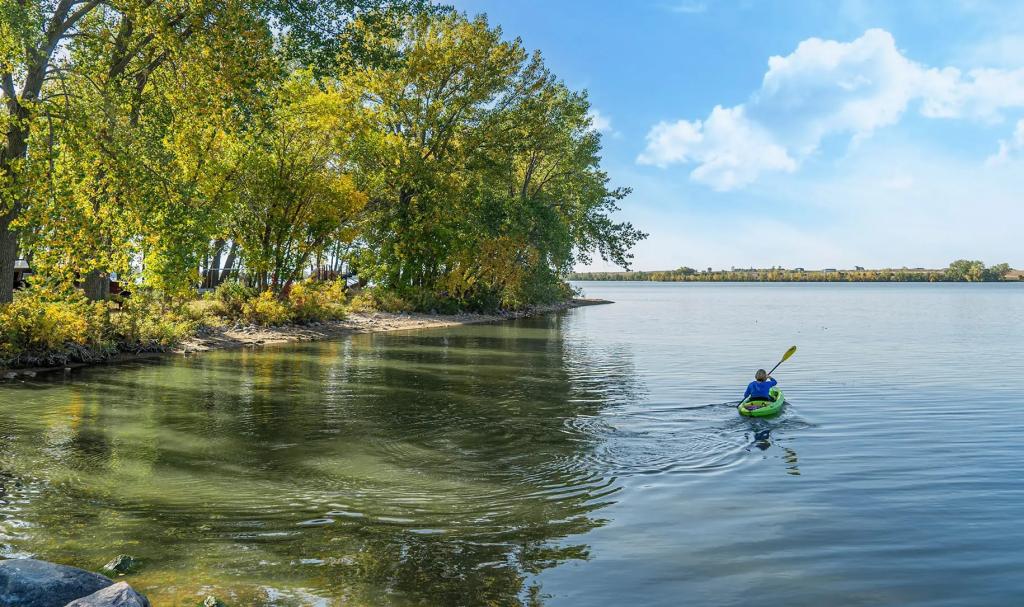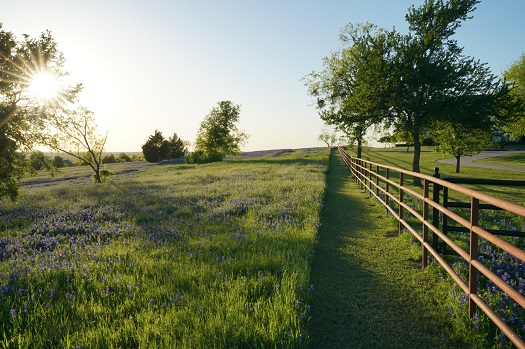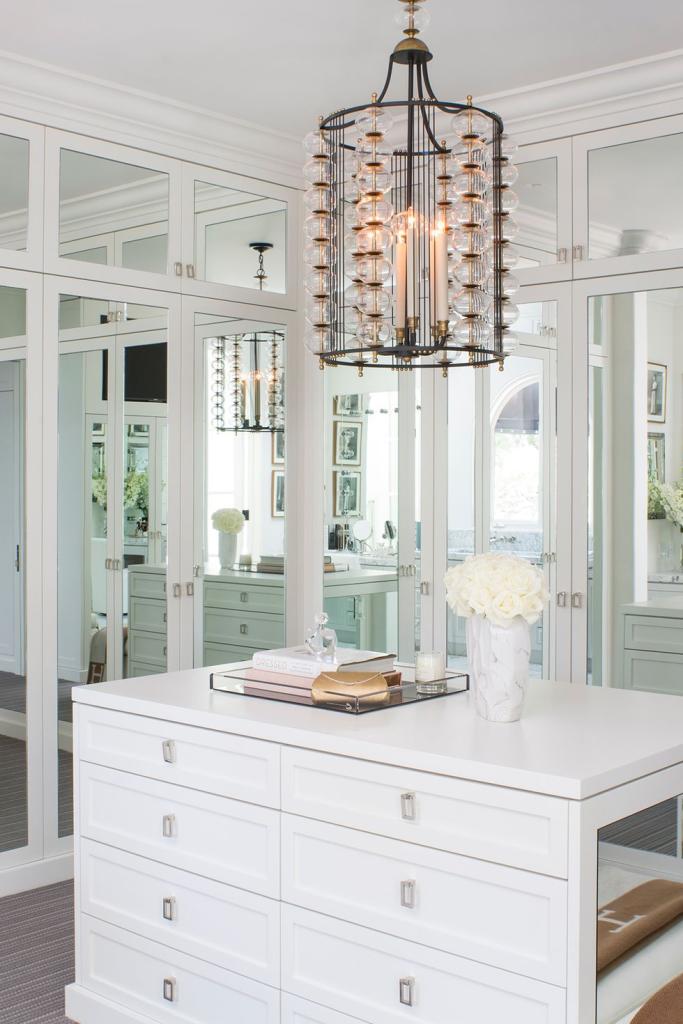Text by Kelly Guinaugh, ASID
Produced by Jeanne Delathouder

Here in the Midwest, we start dreaming about the summer months in spring and the warm weather coming our way soon. Like many lake lovers, we relish this season because it allows us to revamp our outdoor furnishings and return to our blissful outdoor living spaces once again. My Chicago-area design firm, Interior Enhancement Group, embraces this opportunity every year to create unique spaces through our bespoke designs that speak to our clients’ lifestyles. Spring is a special time for us—when we get to stretch our creative wings and plan your perfect outdoor living scenario, so when the sun shines again, and temps begin to soar, these spaces are ready for you to enjoy.
This year, we are seeing an emphasis on a few new trends as well as the continuation of those we have seen over the past few years. Lake homeowners especially want to connect with nature via their outdoor living spaces, and maximizing the splendid water views remains a priority. Light-filled sunrooms, lavish patios, and party-ready outdoor kitchens continue to trend, blurring the lines between inside and out. Additionally, mixing textures, materials, and organic shapes is still going strong and brings a soothing aesthetic to any space.
Comfort and functionality are also essential to enjoying life at the lake. And this year, we’re bringing on double-duty lounge pieces, bold colors, and patterns like never before. There is also a focus on layered lighting—think firelight, ambient light, and task lighting—to create (and control) your desired vibe. So, join me as I walk you through some of my favorite outdoor furnishings trends for 2024.
Seamless Living
When our indoor spaces flow gracefully into our outdoor living areas, the result is a seamless design that creates lovely continuity. The first step to accomplishing this starts with flooring. Simply by using the same porcelain or stone both inside and out, your spaces suddenly feel like one large room, expanding the living areas visually. The same effect can be achieved if we use different materials but keep them in the same color family.
Beyond the foundation of the floor material, we always get great results when using the same color scheme in our fabrics and finishes, as well as similar furniture styles. And don’t forget to include comfy cushions and soft pillows, just like in your interior rooms. This will further create an equally inviting outdoor space—just like what you’re accustomed to in your family room. More and more, people continue to blur the boundaries between inside and out.
Bold Beauty

In both interior and exterior living spaces, our clients are ready to add more patterns and bolder colors than in recent years. We are seeing vibrant colors—emeralds, saturated blues, and bright oranges—and a fearless mix of patterns. Bold stripes, graphic prints, and large and small-scale florals are all happy together outside.
A bold approach with textures is trending as well. Outdoor furnishings are blending industrial metals with concrete accent pieces. Finishes range from smooth to rugged and unfinished—all working together to bring interest, drama, and organic appeal to your outdoor living space.
Pattern Play

This playful patio comes to life in a dance of patterns and lively colors. Stripes harmonize with graphic floor tile with this vivid primary palette anchored with black accents. Woven lanterns and glossy ceramic stools bring a balance of refined textures that complement the rustic wood ceiling beams. The black-and-white tile floor bordered in solid black defines the seating area, much like an area rug. A circular fire pit with cushions provides extra seating for guests while creating a dynamic focal point. Simply put, these fun outdoor furnishings welcome a party!
Light It Up!

Outdoor lighting is essential to creating an alluring atmosphere. It generates a sense of warmth and invites guests to linger around the dining table or cozy up to a soothing fire pit. Lighting can create drama, but it also enhances our security while adding a positive element to our curb appeal. As our clients expand their living spaces outside, lighting follows suit with the same concepts we apply to our interiors.
Here, a lavish covered patio includes a luminous halo chandelier, dimmable pendants over the dining table, and recessed lighting around the ceiling perimeter. String lights guide the transition to the alfresco area, with an intimate seating area surrounding a fire table for roasting marshmallows or enjoying cocktails after dark.
Set the Mood

Here, a softly lit woven pendant mingles with candlelight in this elegant outdoor setting. With the right lighting, you can create your perfect ambiance for an outdoor gathering. So, when the sun goes down and evening sets in, the magic of the moment takes over with pure enchantment.
Luxe Alfresco Dining

This glorious outdoor setting emanates garden elegance with climbing vines covering a pergola overhead. A linear chandelier illuminates the long rectangular dining table, along with a built-in outdoor fireplace glowing in the background. This lavish setting captures the essence of luxurious outdoor living while maintaining a casual and carefree vibe.
Double Duty Seating

So many of our clients are looking for ways to maximize their outdoor spaces. A few key tips to accomplish this is to use accent chairs that can also function as overflow seating around your dining table. And simple things like selecting a cocktail ottoman, bench, or side table that includes storage give you a place to tuck away blankets you’ll want handy when the sun goes down.
Here, these lightweight pieces are easily movable to suit almost any outdoor occasion. The extra chairs can be pulled in where you need them—poolside or lakeside.
Modular Lounging

Photo courtesy of Lane Venture
Modular seating pieces can be a game changer for outdoor entertaining because they can be reconfigured to suit your needs. Here, this generous sofa sectional from Lane Venture’s Oasis Collection virtually creates a living room outdoors. Sumptuous cushions upholstered in a high-performance fabric welcome wet bathing suits without fuss. Pull the sectional apart, and you can arrange the seating pieces any way you like.
I hope these inspirational ideas and tips can guide you in creating your perfect outdoor setting. If you’re planning a project of your own, my team at Interior Enhancement Group is eager to assist you with all your interior design needs. Here’s wishing you and yours a blissfully beautiful season by the lake!

